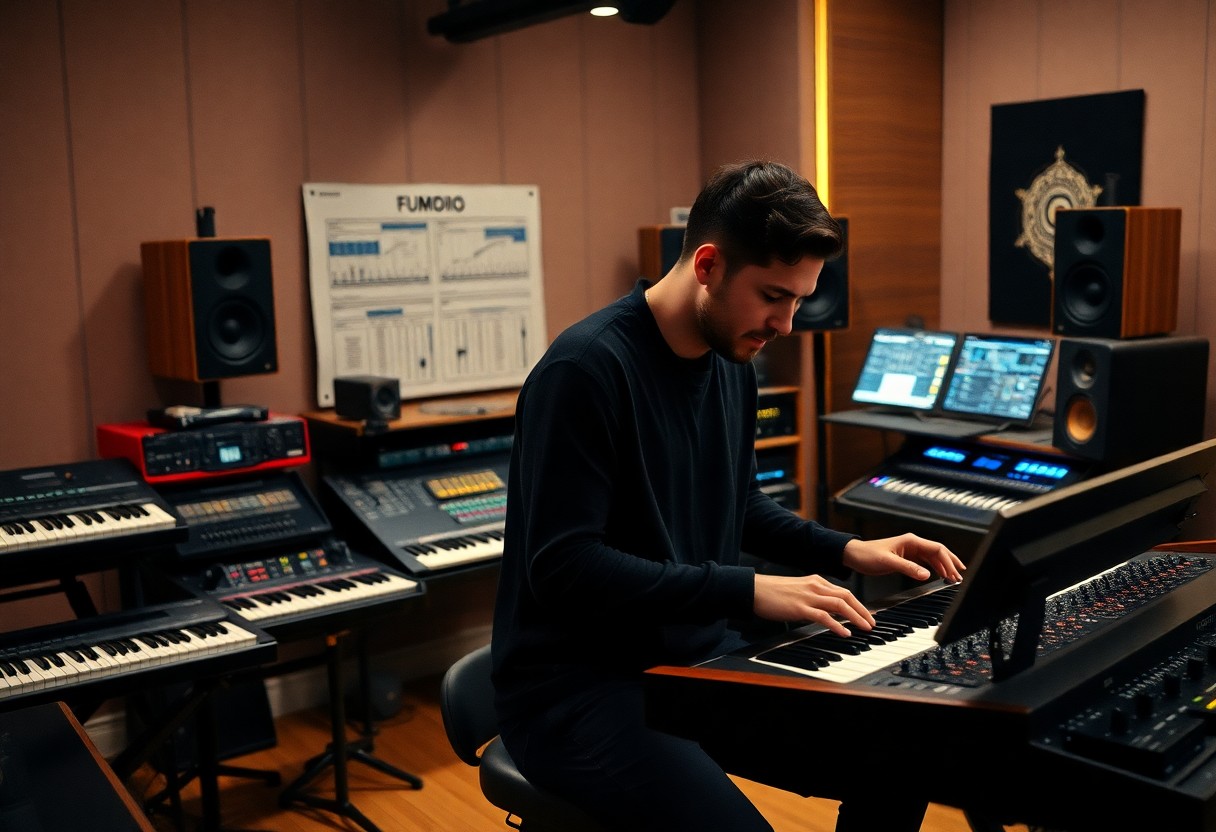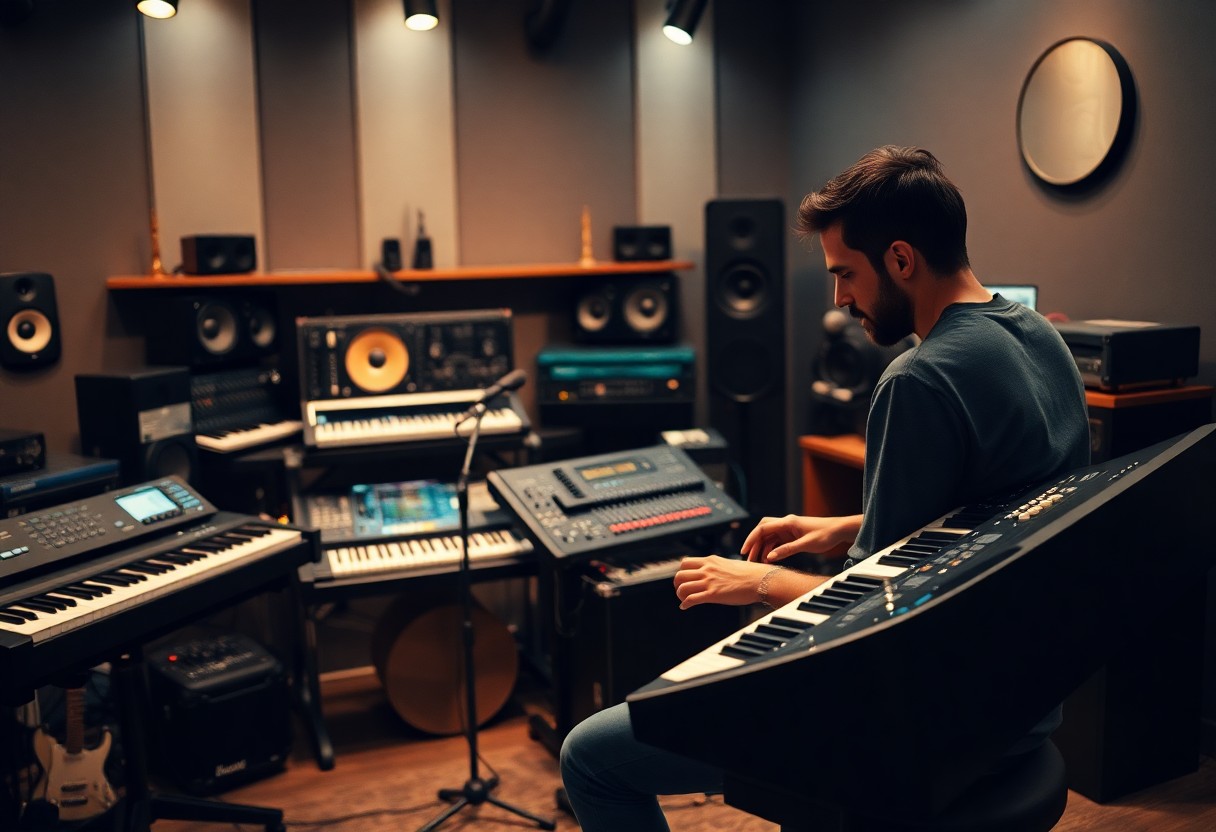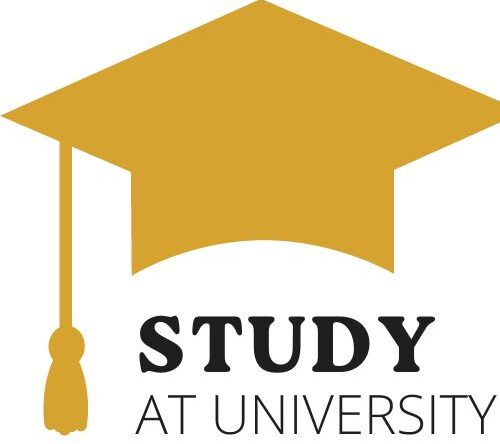Music is an ever-evolving art form, and understanding the innovative realm of Electro Acoustic Music (EAM) can elevate your creative pursuits to new heights. The Master of Electro Acoustic Music (M.E.A.M.) program equips you with the important skills and knowledge to navigate this fascinating genre. You will explore the intersection of technology and traditional musical practices, allowing you to develop your unique sound and artistic voice. This program opens doors to advanced compositional techniques and performance methodologies, ensuring you are well-prepared for a dynamic career in contemporary music.
Key Takeaways:
- M.E.A.M. focuses on the integration of classical music principles with contemporary electronic soundscapes, enhancing creativity and technical skills in music production.
- The program encourages collaboration across various artistic disciplines, fostering a community of innovation among composers, sound designers, and artists.
- Students gain hands-on experience with cutting-edge technology and software, preparing them for diverse career paths within the music and sound industries.
The Sonic Landscape of Electro Acoustic Music
Your experience with electro acoustic music is defined by its unique sonic landscape, where traditional instrumentation blends seamlessly with innovative sound manipulation techniques. This genre transcends conventional music boundaries, inviting you to explore textures and soundscapes that are both familiar and alien. The interplay between acoustic sources and electronic modification creates a rich auditory environment, encouraging you to engage emotionally and intellectually with the sounds that surround you.
Defining Electro Acoustic Music: Sounds, Techniques, and Technologies
Electro acoustic music bridges the gap between live performance and recorded sound, employing various techniques that manipulate sonic materials. You encounter sounds ranging from field recordings and sampled instruments to synthesized tones, all integrated into compositions that push creative boundaries. Techniques such as granular synthesis, live-looping, and real-time processing provide artists with tools to craft intricate sound designs that evoke a spectrum of emotions and interpretations.
Key Historical Milestones: From Experimentation to Mainstream
The evolution of electro acoustic music is marked by key milestones that transformed experimentation into mainstream recognition. Your journey through this genre reveals a timeline that spans from early pioneers in the 1930s, such as Pierre Schaeffer and his musique concrète, to contemporary artists who explore the digital realm. Each innovation contributed to shaping electro acoustic music, emphasizing its ability to capture the zeitgeist across generations.
Consider the pivotal moment in the late 20th century when artists like Brian Eno began integrating these experimental techniques into popular music. Tracking through the 1960s and 1970s, you observe how the emergence of synthesizers and tape manipulation propelled electro acoustic music into more widespread consciousness, influencing genres like pop and ambient. The 1980s saw further evolution with the digital revolution, allowing artists to leverage computers for intricate sound design. By the 2000s, electro acoustic elements became commonplace, evident in chart-topping albums, showcasing how a once-niche art form transitioned to a significant force in contemporary music culture. Each historical milestone has enriched your understanding of the genre’s depth and breadth, laying the foundation for its future trajectory.

Crafting the Electro Acoustic Experience
In crafting the electro acoustic experience, you blend the nuanced subtleties of organic sound with the vast potential of electronic manipulation. This interplay creates a multi-layered auditory journey that can evoke emotions, provoke thought, or transport listeners to another realm. By thoughtfully utilizing various sources—whether through field recordings, instruments, or synthesized elements—you craft a narrative that challenges the boundaries of traditional music and invites your audience to immerse themselves in soundscapes that are both familiar and surreal.
Essential Tools of the Trade: Equipment and Software for M.E.A.M.
Your toolkit for electro acoustic music production is diverse and innovative, integral for realizing your sonic vision. A solid Digital Audio Workstation (DAW), such as Ableton Live or Logic Pro, serves as the foundation for your recordings. Complement this with a range of microphones to capture acoustic sounds, audio interfaces for high-quality input/output, and various plugins for sound manipulation. Synthesizers, samplers, and even mobile recording devices can enhance your creative process, offering endless possibilities for exploration.
Compositional Strategies: Merging Acoustic and Electronic Elements
The art of merging acoustic and electronic elements requires a keen understanding of how these sound worlds interact. In your compositions, consider layering live instrument recordings with synthesized sounds, creating a rich tapestry of textures. Techniques like granular synthesis can transform acoustic samples into entirely new sonic experiences. You might also experiment with real-time processing using effects like reverb and delay to manipulate live performance, blurring the boundaries between the organic and the technological. This fusion invites the listener into a captivating dialogue where traditional musicianship meets cutting-edge technology, giving your compositions a distinctive edge.
Exploring various compositional strategies allows you to create a seamless blend between acoustic and electronic components. For instance, starting with a core acoustic melody can provide a solid foundation, which you then enrich with layers of electronic sound design. Utilizing rhythmic elements from electronic sources can support the emotional weight of acoustic counterparts, forging a cohesive and immersive experience. Drawing from genres such as ambient, experimental, or even traditional folk elements opens paths for creativity that push the limits of conventional music-making. With thoughtful experimentation and a willingness to take risks, your electro acoustic pieces can evolve into profound explorations of sound and identity.
The Role of the Master: Teaching and Mentoring in M.E.A.M.
Your journey in M.E.A.M. is enriched by the guidance of seasoned practitioners who share their expertise and insights. Masters not only impart critical skills but also foster a nurturing environment where creativity thrives. They encourage exploration within the diverse realms of electro acoustic music, helping you to find your unique voice and style. Their mentorship can lead to significant breakthroughs, as you benefit from tailored feedback, collaborative projects, and exposure to vital industry trends.
Skills Development: Essential Techniques for Aspiring Artists
Mastering electro acoustic music involves honing specific skills that define your artistic identity. Techniques like sound synthesis, sampling, and live-processing become integral as you navigate this complex landscape. With the help of experienced mentors, you’ll learn to manipulate sound in innovative ways, blending traditional and modern approaches. Masterclasses and hands-on workshops provide practical experience, equipping you with the tools to push creative boundaries and develop your signature sound.
Professional Networks: Building Connections in the Electro Acoustic Community
Establishing connections within the electro acoustic community is vital for your growth as an artist. Engaging with fellow musicians, sound engineers, and industry professionals opens doors to collaborative opportunities and showcases. You’ll find that participating in local events, festivals, and online forums helps you to stay updated on the latest developments and resources in the field.
Building a professional network not only expands your reach but also allows you to tap into shared knowledge and experiences that can elevate your work. Attend workshops, join online communities, and participate in competitions to meet like-minded individuals who share your passion for electro acoustic music. Each connection has the potential to lead to collaborations, mentorship, or even gigs that can propel your career to new heights. By actively engaging with the community, you position yourself as a key player, ready to leave your mark on the electro acoustic landscape.

Innovative Uses and Applications of Electro Acoustic Music
The realm of electroacoustic music has expanded far beyond traditional studio settings, fostering innovation in various domains. From immersive virtual reality experiences designed to evoke emotional responses to interactive installations that invite audience participation, the versatility of electroacoustic compositions has proven vital. As you explore the dynamic characteristics of this genre, check out Electroacoustic Music: 3 Characteristics of Electroacoustic for further insights.
Beyond the Studio: Live Performance and Interaction
Live performances present a unique arena for electroacoustic music, where artists can creatively manipulate sounds in real-time alongside audience interaction. The integration of technology has allowed you to bridge the gap between performer and listener, creating an engaging experience that invites spontaneous reactions and deep connections with the music.
Cross-Disciplinary Collaborations: Art, Film, and Beyond
Electroacoustic music thrives in interdisciplinary collaborations, enhancing various art forms, from film to visual arts. By merging sound with visuals, filmmakers can intensify narratives through backdrops of evocative soundscapes. Your involvement in these collaborations can result in groundbreaking works that blur the lines between auditory and visual art, creating a comprehensive sensory experience.
The collaboration between electroacoustic artists and filmmakers has given rise to stunning projects that captivate audiences worldwide. Take, for instance, the renowned film “Koyaanisqatsi,” which utilizes a powerful score by Philip Glass, interwoven with field recordings to create an awe-inspiring audio-visual narrative. These collaborations can foster synergy, with artists exploring sounds that resonate with visual storytelling. Additionally, collaborations with visual artists often lead to unique installations, as you combine dynamic soundscapes with innovative visual presentations to create immersive environments that provoke thought, emotion, and engagement from your audience.
The Future Horizons of Electro Acoustic Music
Your understanding of electro acoustic music will continue to evolve as new trends and technologies emerge. The landscape is expanding with innovative genres and advancing techniques, making way for fresh expressions and interactive experiences. As musicians experiment with the fusion of electronic and acoustic elements, the future promises an exciting array of sonic possibilities that will redefine conventional music composition and performance.
Emerging Trends: New Genres and Technological Advances
With the rise of artificial intelligence and algorithmic composition, new genres within electro acoustic music are surfacing frequently. Emerging technologies, such as immersive sound environments and virtual reality platforms, enable you to experience music in multidimensional ways, reimagining how performance and audience interaction is perceived. As artists draw on these advancements, anticipate ground-breaking styles that blend genres, pushing boundaries in storytelling through sound.
Global Influences: The Impact of Cultural Exchange on Electro Acoustic Artistry
Cultural exchanges are pivotal in shaping electro acoustic music’s evolution, as musicians worldwide blend their unique traditions with modern soundscapes. This cross-pollination brings forth innovative textures, rhythms, and techniques that create a rich tapestry of sound, offering you diverse musical experiences. Artists infuse regional elements with technology, resulting in sounds that resonate on both local and global levels.
The impact of cultural exchange in electro acoustic artistry cannot be overstated. You will find numerous artists, like Amon Tobin, who incorporate Brazilian rhythms into electronic compositions, creating mesmerizing fusions that reflect their heritage while embracing modern technology. Similarly, collaborations between Western and Eastern musicians showcase the versatility of human expression, with artists like Huang Ruo merging traditional Chinese instruments with contemporary electronic elements. Such exchanges not only enrich the sonic palette but also promote understanding and appreciation of varied cultural backgrounds in the art form that continues to evolve daily.
To wrap up
On the whole, pursuing a Master of Electro Acoustic Music (M.E.A.M.) allows you to research into the innovative realm of sound and technology. This program equips you with the necessary skills to explore and create unique audio experiences, blending traditional music practices with modern digital techniques. You’ll have the opportunity to refine your artistic voice while collaborating with like-minded peers and industry professionals. Ultimately, your journey through the M.E.A.M. will empower you to shape the future of sound art in a continually evolving landscape.

